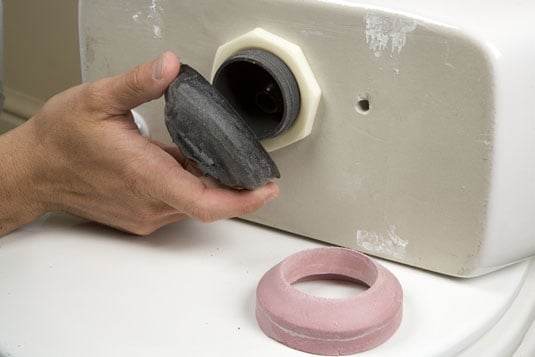
Plus, the tank-to-bowl gasket and tank retaining bolts are preinstalled at the factory, so you don't have to fiddle around with nuts, bolts and steel and rubber washers. It has a flared base that covers most old toilet footprints, so you don't have to replace the flooring just because you're replacing the toilet. Second, the Stinson toilet is designed for a DIY installation.
#Toilet tank bolts replacement full#
First, the Stinson toilet incorporates Sterling's Pro Force® flushing technology to ensure full waste removal with a single 1.28-gallon flush. I like the STERLING® Stinson elongated water-saving toilet for several reasons. However, it takes quite a bit of engineering and attention to detail to design a water-saving toilet that removes all the waste with a single flush and doesn't clog. Lots of companies make inexpensive "water-saving" toilets.
#Toilet tank bolts replacement professional#
I'll give you some buying and professional installation tips that'll make the job easier. You don't need special tools just an adjustable wrench, 7/8" combination wrench, level, screwdriver and a hacksaw. If not, your replacement has been successful, and you can rest easy.Installing a new water-saving toilet is a great way to spruce up your bathroom and save on your water bills. If they leak, you will need to replace the bolts, nuts, and washers again. Over the next 36 to 48 hours, check the toilet tank bolts for any recurring leaks.

Finally, reconnect the water supply and refill the toilet tank, setting the lid back into place last. Check that the toilet tank is connected solidly and is staying perpendicular to the bowl housing. Fasten the bolts alternately with a few turns at a time of the adjustable wrench. You and your helper can now raise the toilet tank back over the toilet bowl housing and reseat the bolts and central tank gasket correctly. Then, replace the washers and nut on the second bolt in the same order. Add a new metal washer to secure the tank to the toilet bowl housing. Attach a new nut before finishing up with a third rubber washer. Insert this into the tank hole, and then put a second rubber washer on the bolt on the outside of the tank. Put one rubber washer on the bolt so that it sits between the tank and the bolt head. Discard these and slide the new ones in their place. You can now extract the bolts from the tank, removing all the old rubber washers. Step 5 - Remove and Replace all the old Rubber Washers With a helper, lift the tank straight up and carry it to the padding, laying it down flat for safety. Keep turning the nuts until you can pull them out completely Step 4 - Lift off the Tank and Set it on Padding Apply some penetrating oil such as WD-40 or 3-in-1 if the bolts still prove stubborn.

If they are stuck, hold the nut with the wrench while a helper turns the bolts with the screwdriver from inside the tank. With the adjustable wrench, try to loosen the nuts from the bolts. Lift off the toilet tank lid and set it aside on a large pile of blankets and towels, leaving room for the tank as well.

Absorb any overflow with towels and sponges behind the toilet bowl. With the adjustable wrench, pull the water supply line clear of the toilet tank.

Shut off the water flow to the tank at the water shutoff valve, and flush the toilet to empty it completely. Step 1 - Drain the Water From the Toilet Tank


 0 kommentar(er)
0 kommentar(er)
